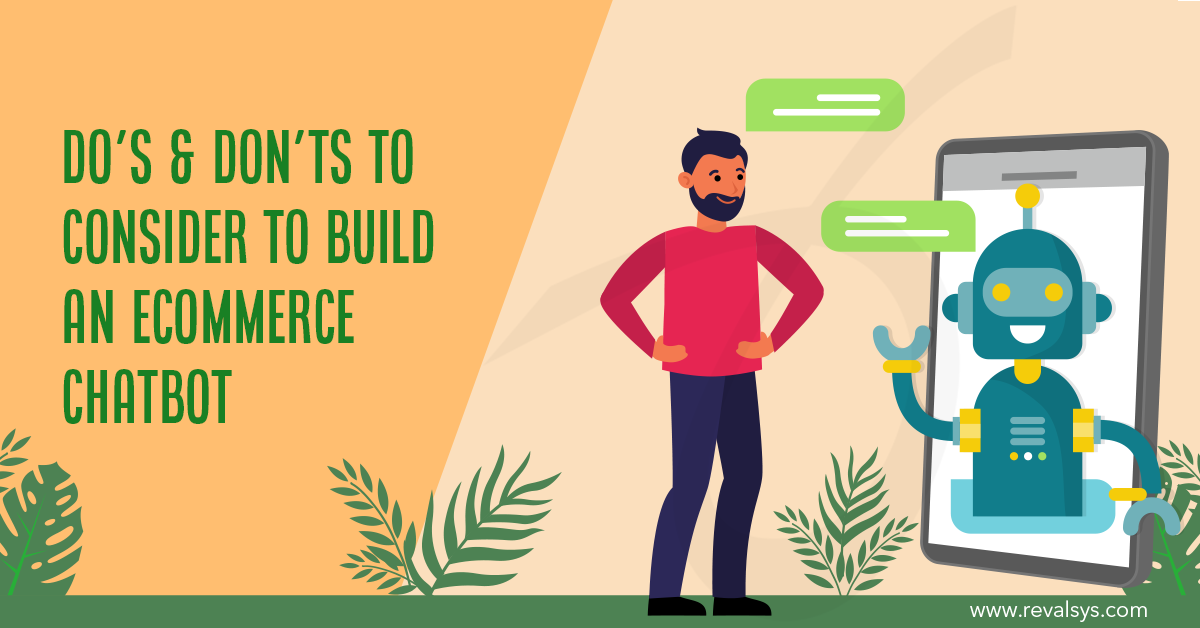
An ecommerce chatbot is an automated software application that is used to reduce human intervention in providing real-time customer support through chats. With the rise of online and social commerce, especially after the COVID-19 pandemic, the prominence of ecommerce chatbots has increased.
Benefits Of Having An Ecommerce Chatbot
An ecommerce chatbot can help customers in the following ways:
- Assistance in the purchasing process
- Give personalized product recommendations
- Notify about new product launches
- Track orders
Using a chatbot also has some benefits for ecommerce companies:
- Saves time and resources by automating customer service
- Minimizes cart abandonments
Types Of Ecommerce Chatbots
Rule-Based
Rule-based chatbots provide a list of queries for users to choose from with a predefined set of answers. These chatbots are easy to build, can be used to automate the monotonous process of answering frequently asked questions, and save time by providing faster customer service. However, their options for queries are limited and hence won’t be able to resolve a wide variety of issues.
AI-Based
These chatbots are more human and are based on artificial intelligence and machine learning. Users can type their queries into these chatbots, and they have the ability to understand natural language. But they have their own share of drawbacks. They are expensive to build, require technical skills to implement, and are prone to bugs.
Do’s And Don’ts For Building An Ecommerce Chatbot
Do:
Enable Push Notifications
Your customers could be doing multiple tasks at a time on multiple tabs or apps while interacting with your bot. Allow them to enable push notifications for your bot on their phone so that they know when you have replied to their messages in case of a delay.
Humanize The Chatbot
Since an ecommerce chatbot’s main purpose is to interact with customers, it is important to give it a personality and ensure that its tone is conversational. For example, it needs to be able to interpret abbreviations or spelling errors. Also, although it is easier and faster to choose queries and responses from a menu instead of typing them out, sometimes users may find that their desired queries or responses have not been listed. In such cases, the bot needs to be able to receive and respond to queries in text. To deliver an even more personalized experience to customers, the chatbot should be able to match their style of conversation, i.e., give lighthearted responses to witty customers, use emojis, etc.
Provide Guidance To Customers
Along with helping customers to place and track their orders or navigate the site, chatbots should be able to enhance their shopping experience. They can provide customers with customized recommendations by knowing their personal details and shopping preferences. Bots should also direct them to human customer service personnel when required.
Test Before Launch
Don’t forget to test the bot for its functioning. Before you make it live, get a small group of people to use its beta version. Gather their feedback, and then test the revised version on another group.
Promote It Well
It is important that you have a multichannel marketing campaign in place for your chatbot, as you do for your products. Use different mediums like social media, blogs, and emails to let people know that they can connect with you on the bot. Promote it consistently post-launch as well.
Get Feedback
And just like your products, the feedback on your chatbot is important as well. Find out if users are happy with its design, navigability, responses, and response time, and ask them to rate the bot. You could send them a form through your website or email, or simply include it in the bot itself at the end of a conversation.
Don’t:
Have Long Customer Response Times
The first step to increasing customer satisfaction is by having the chatbot to send them instant replies. Websites like Facebook allow visitors to check a brand’s response time, and longer customer response time increases the chances of customers abandoning a brand altogether.
Ask For Sensitive Information
One of the biggest concerns of customers while shopping online is the safety of their data. In order to assure customers, it is best that businesses do not obtain their personal or payment information through chatbots and use mediums like their website or email.
Leave Questions And Statements Open-Ended
Avoid ambiguity in conversations. The bot’s responses should not only be quick but also clear and precise in order to be able to guide customers well.
Complicate The Process
Customers expect chatbots to make the process of shopping seamless for them. Bots should not unnecessarily make it difficult or confusing by directing customers to multiple pages or asking them too many questions.
Conclusion
Building a chatbot, when done right, can be a gamechanger for improving the sales and customer service of ecommerce businesses by automating the processes and reducing costs. It can help businesses in improving their relationship with their visitors and convert them into leads. Businesses must ensure that the bot’s interactions are authentic and consistent with the brand’s image.
